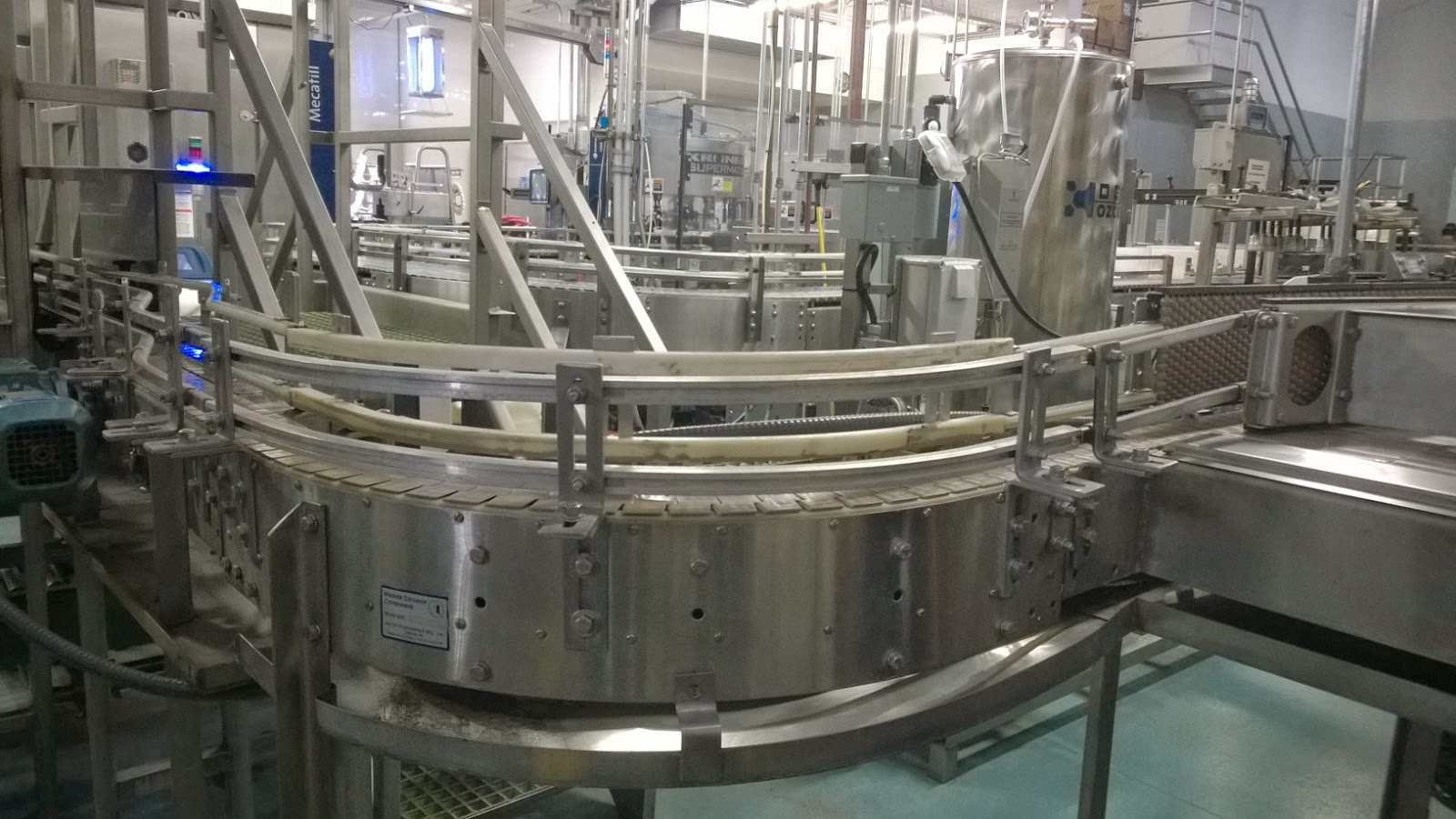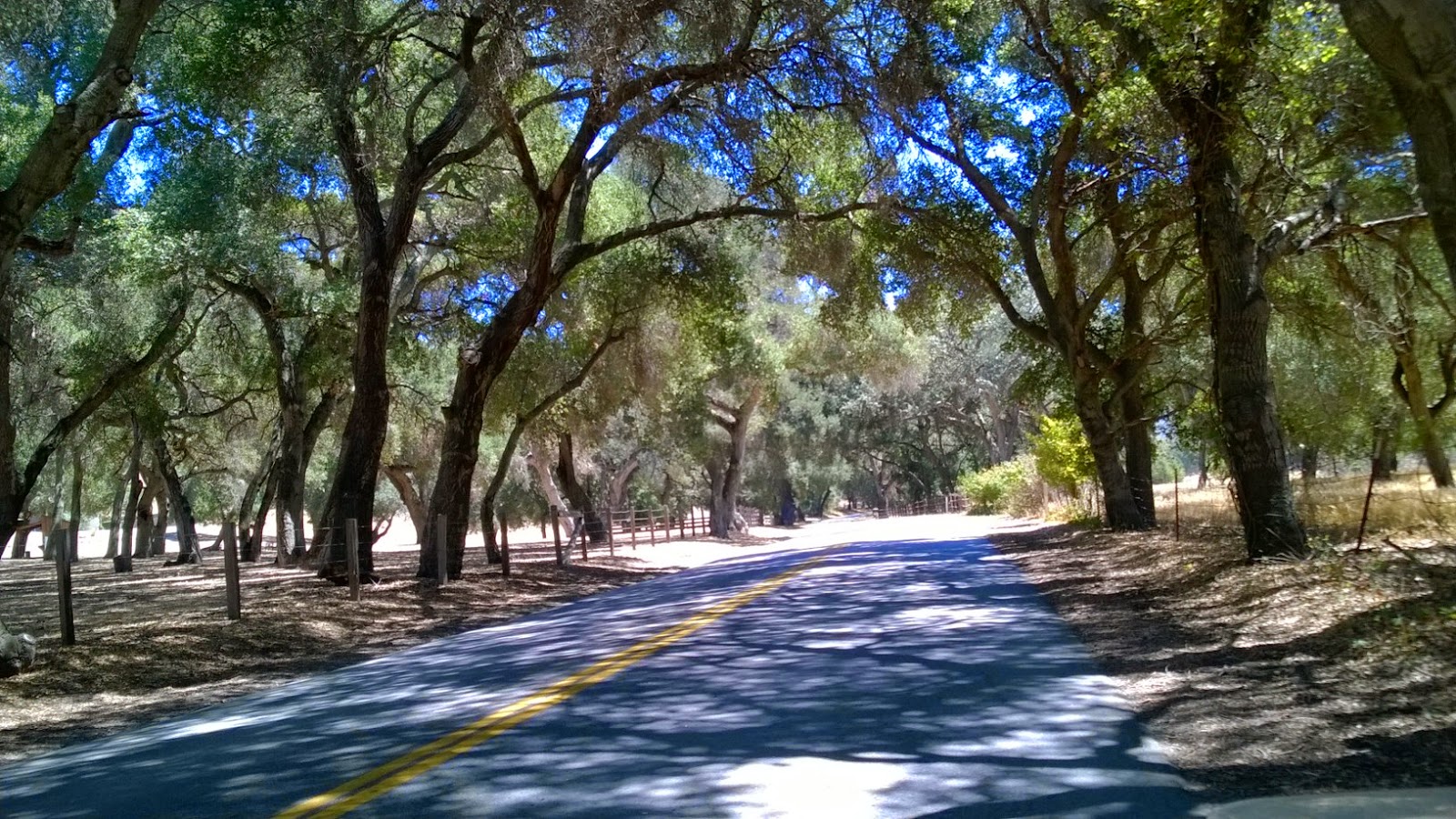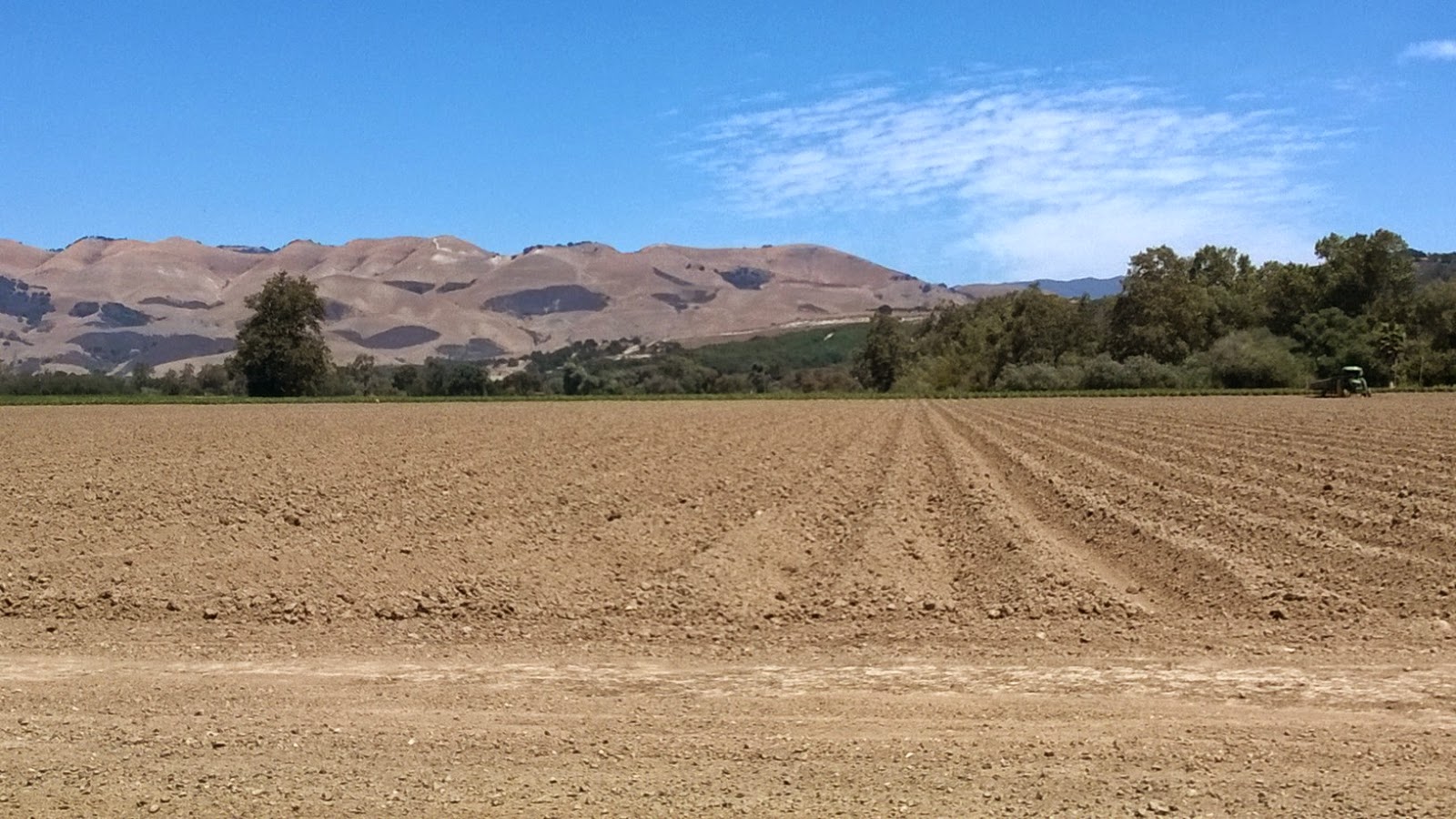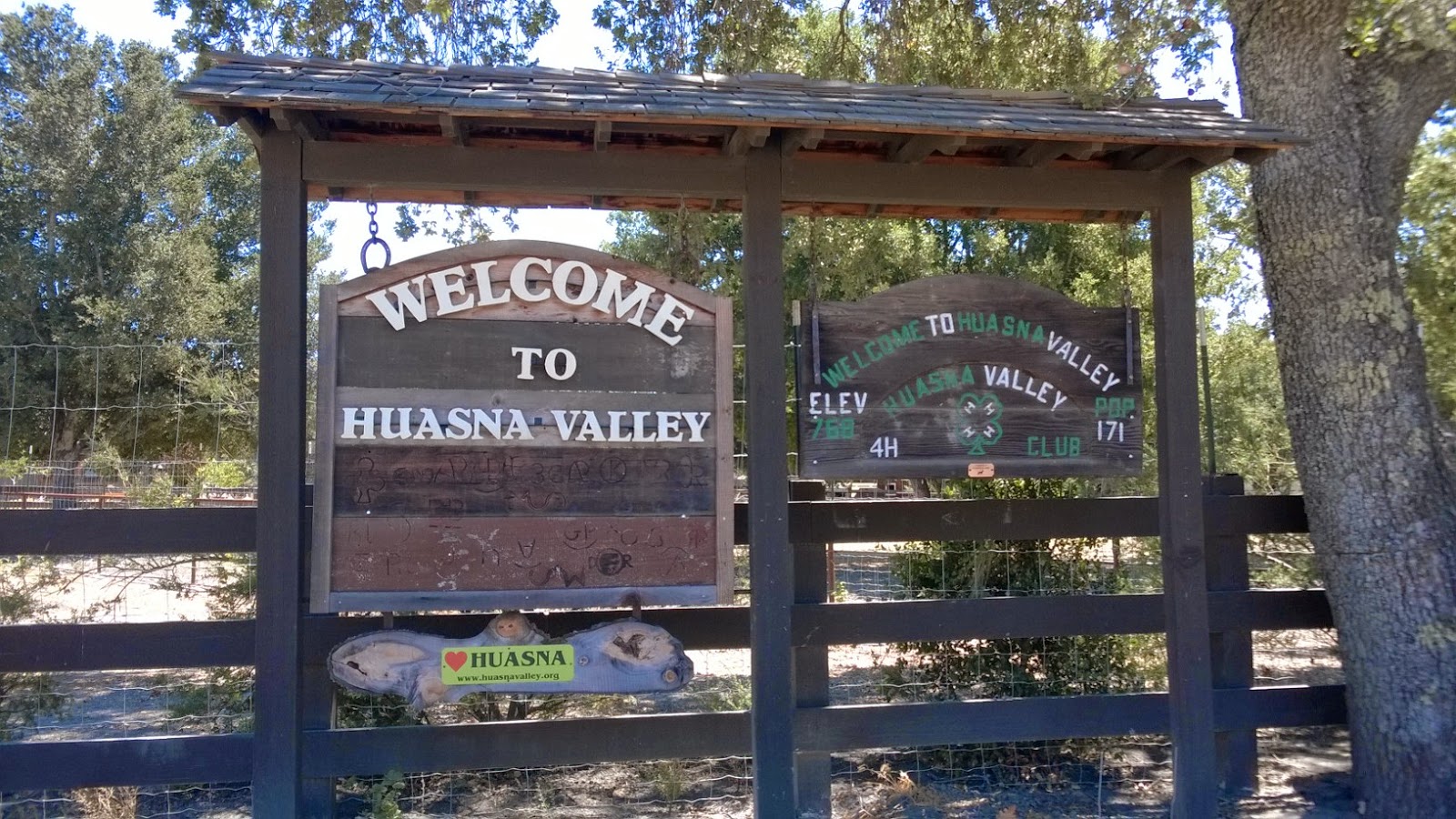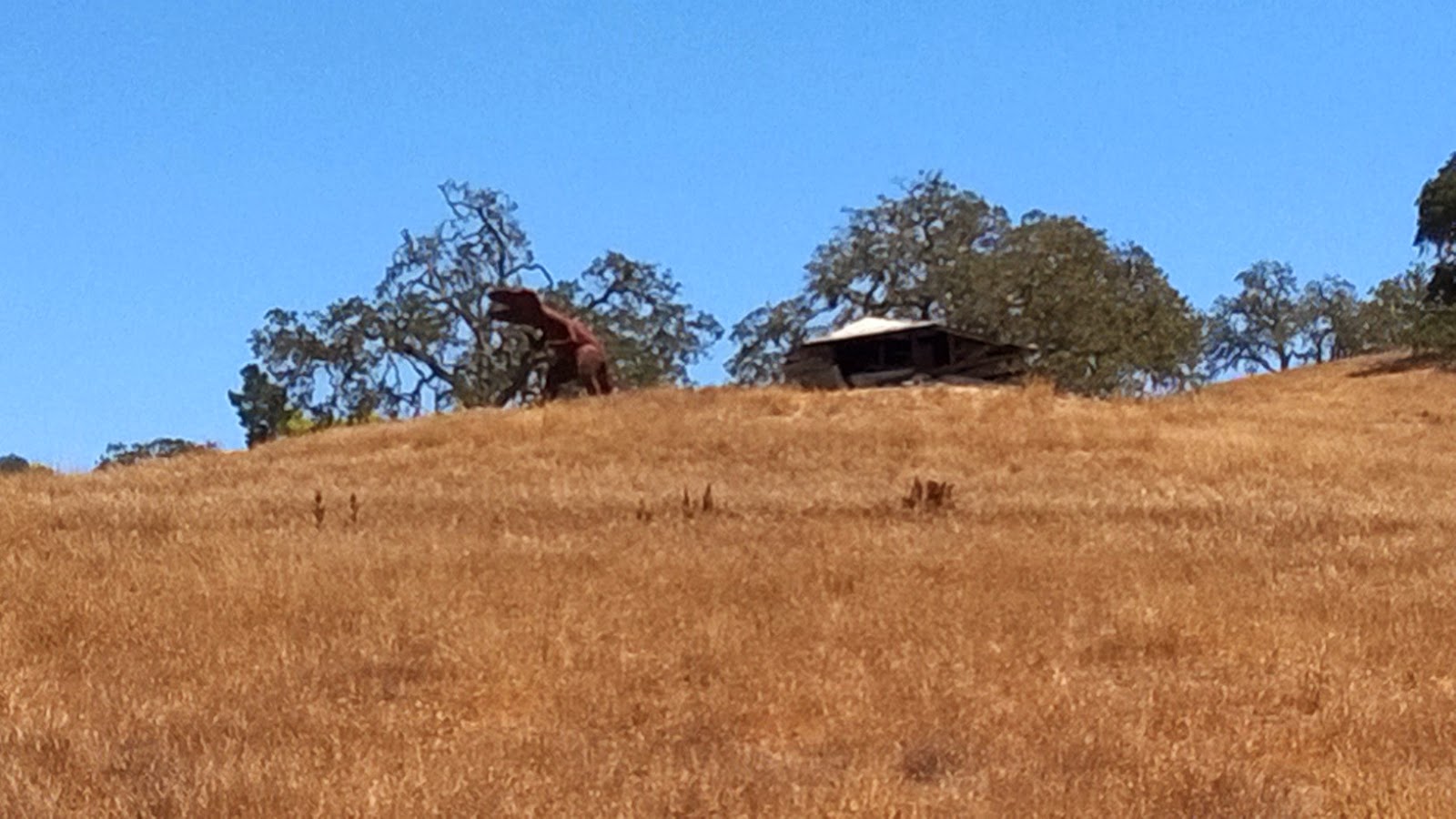Monterey Bay represents the upper boundary of the central coast of California. Located approximately 140 miles from San Luis Obispo, it is accessible from US 101 or CA Hwy 1. The former is a little over a two hour drive, while the latter can take over three and a half hours but offers far more spectacular views (see
Big Sur).
The city of
Monterey has a rich and fascinating history dating back to the Spanish conquest of the American southwest. It served as the capital of
Alta California during both Spanish and Mexican rule and as the site of a decisive battle between the US and Mexico in the
Mexican-American War. It's attracted and inspired artists (
Bruce Ariss), writers (
John Steinbeck), and celebrities (
Clint Eastwood), and been the setting for one the most important rock concerts of all time (
Monterey Pop Festival).
During the early to mid 20th century, due to the favorable conditions of the bay and the advent of commercial fishing operations, Monterey experienced an economic boom in the form of sardine canning. However, as a result of overfishing, by the 1950s, the industry had gone belly-up. As a testament to this boom-to-bust era as well as out of deference to the subsequent environmental concerns, the city of Monterey is now host to one of the most famous aquariums in the world.
The aquarium lies at the end of Cannery Row, built upon the location of the former Hovden Cannery. This is acknowledged immediately upon entering the aquarium.
 |
| Giant boilers (where the sardines were cooked during the canning process) at the entrance to the aquarium |
There are two floors of exhibits and an exterior boardwalk that affords views of the whole bay.
Just past the boilers, it's impossible to miss the giant kelp forest exhibit. It's two stories tall with multiple species weaving through the yellow kelp plants.
 |
| View from the second floor |
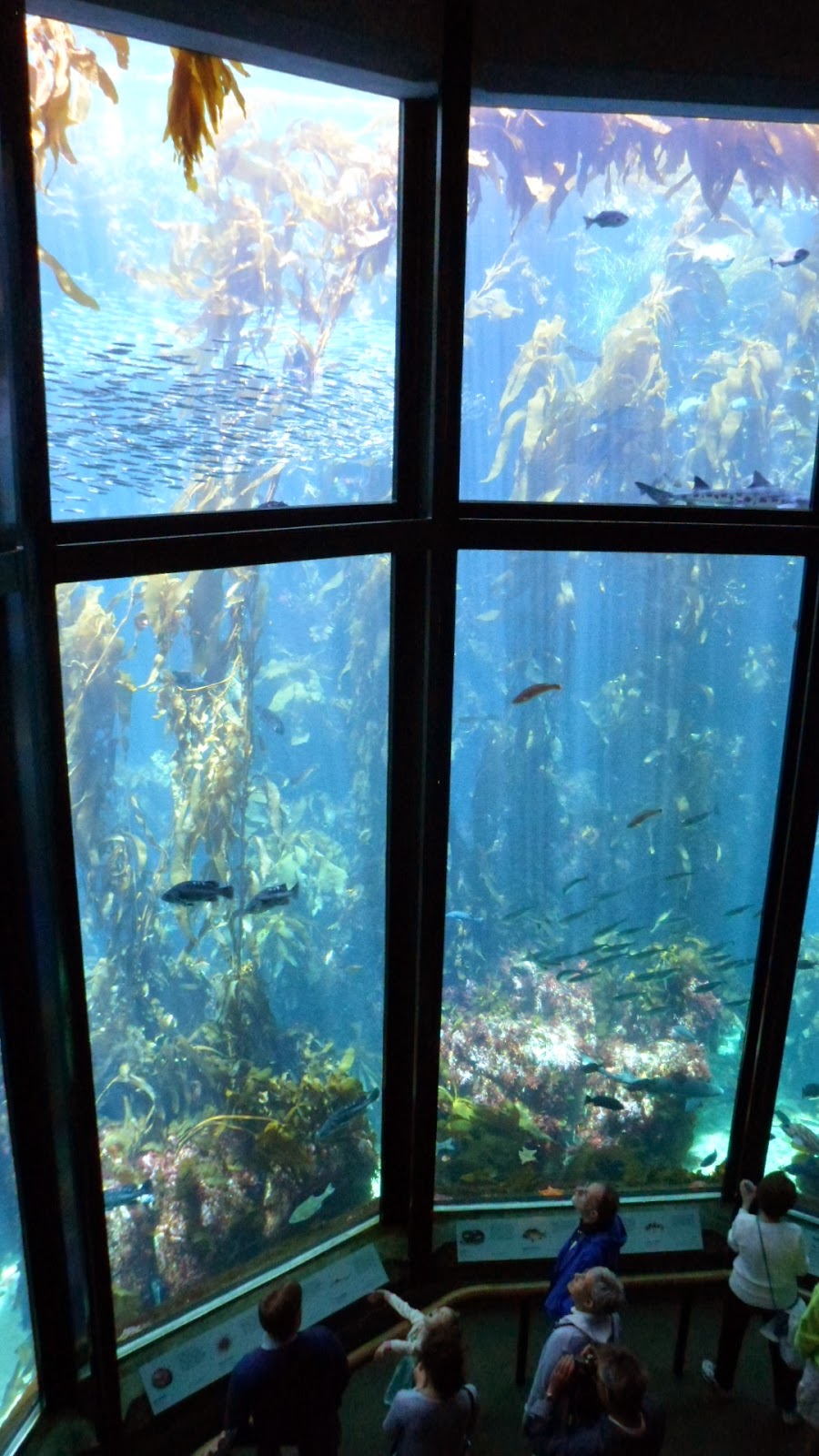 |
| View from the second floor |
Next to this giant kelp forest is another large habitat with sharks, rays, fish and coral (flash was not permitted so some appear blurry).
Various tanks within the walls surrounded these two large exhibits and consisted of smaller habitats.
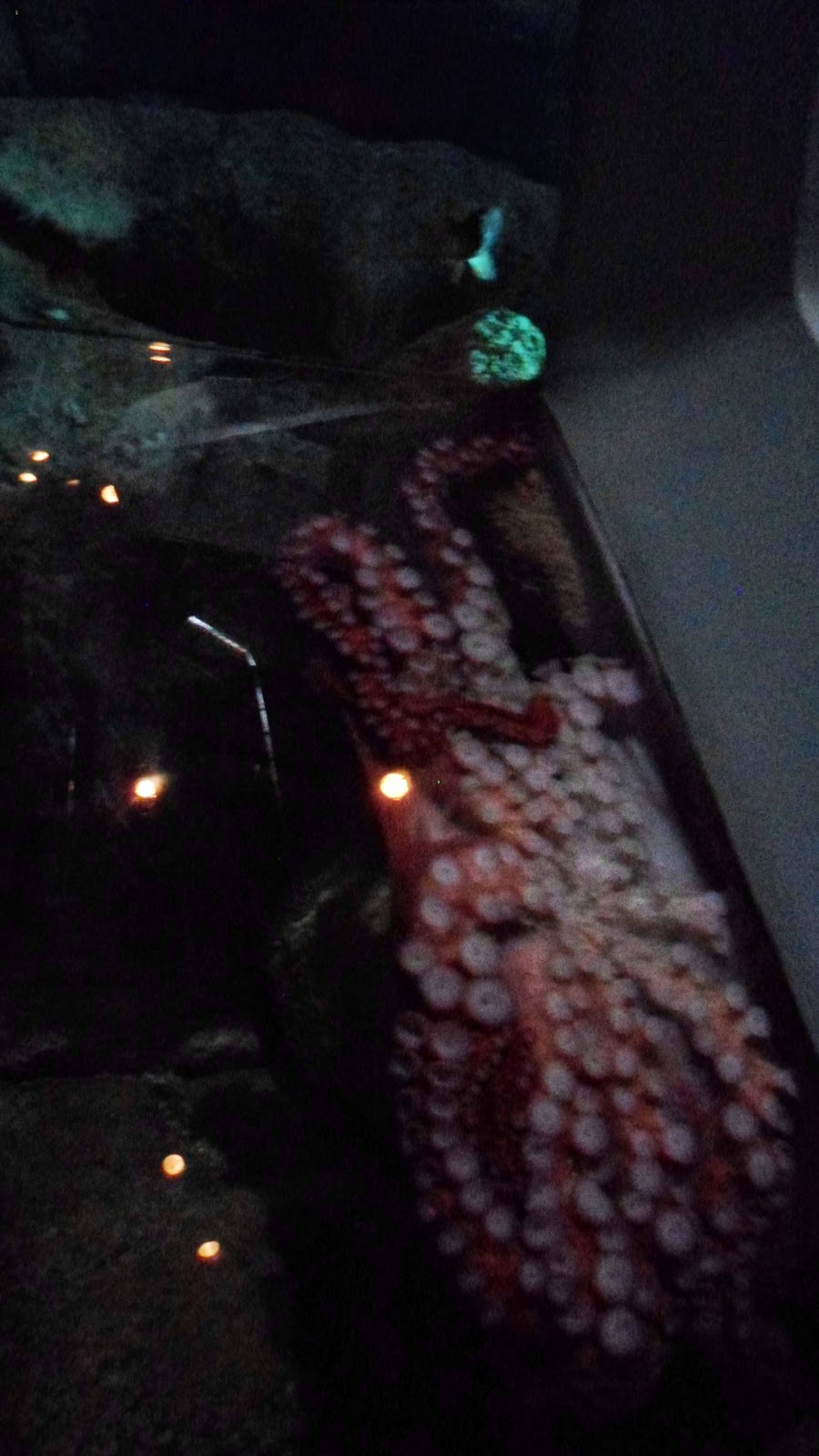 |
| This octopus was motionless, completely suctioned to the glass |
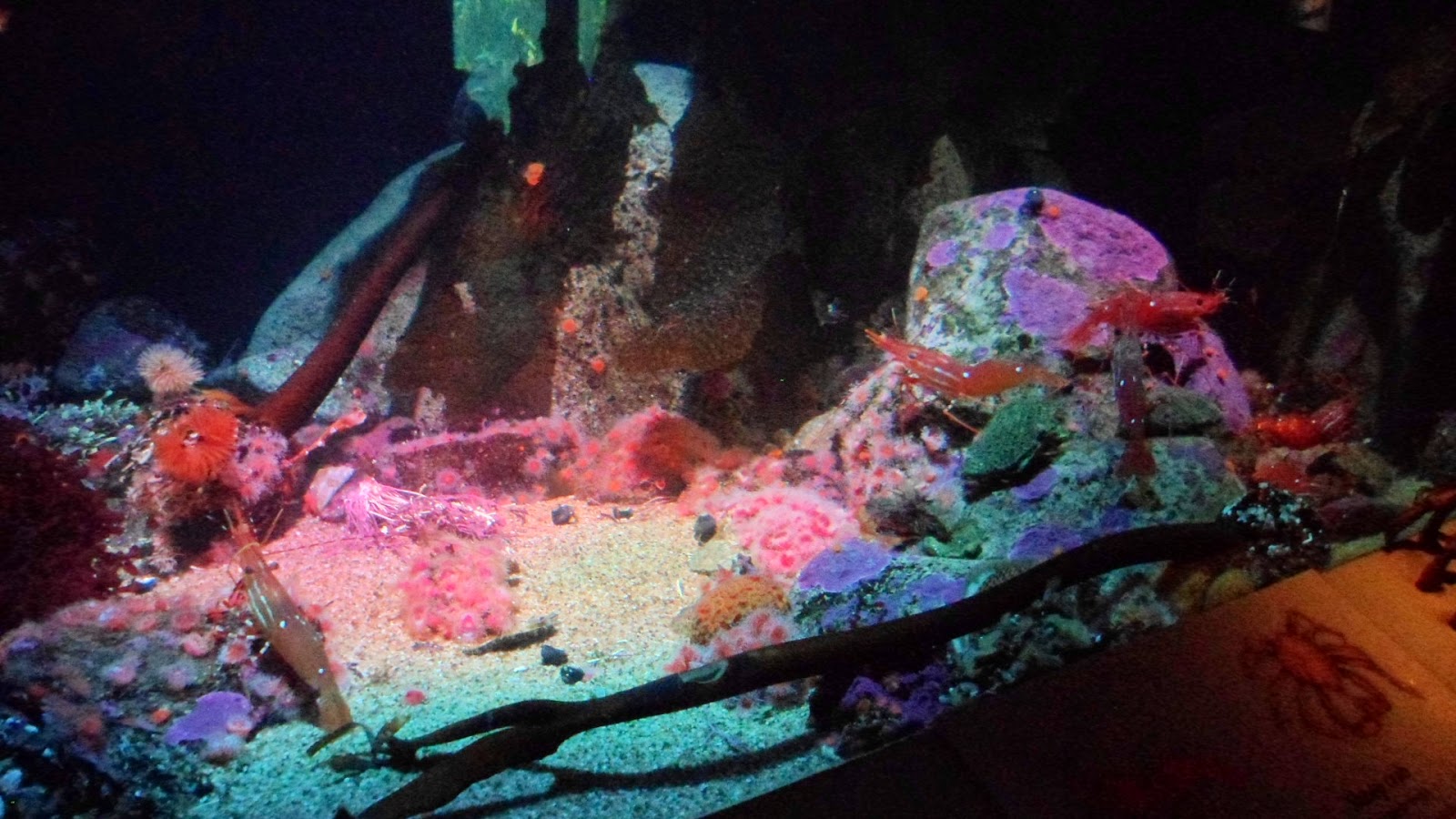 |
| Prawns |
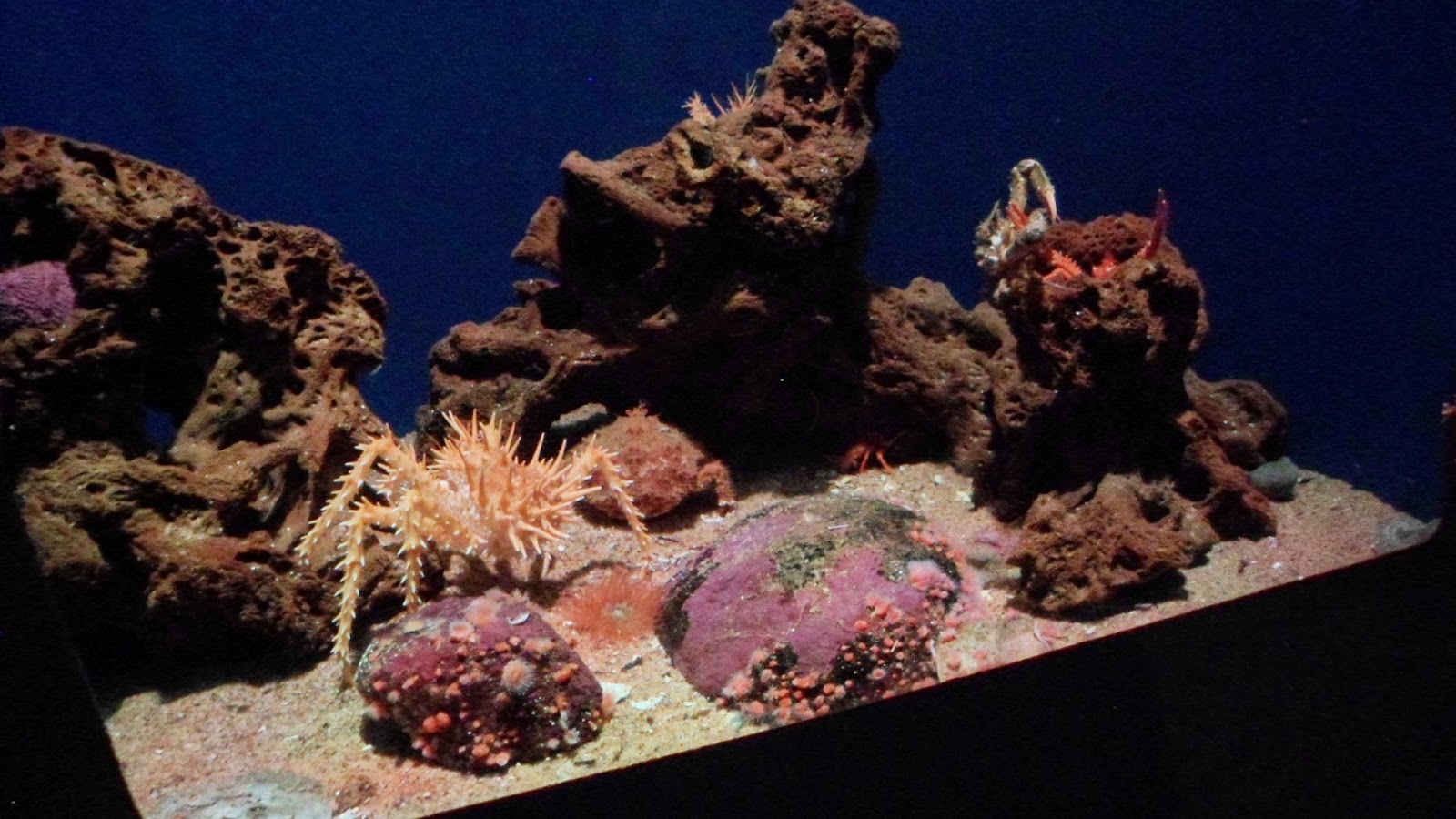 |
| There are six crabs in this photo |
The last set of exhibits on the first floor of this wing ("The Ocean's Edge") include an aviary and touch pools. Exiting here leads to the exterior amphitheater and affords a view of the expansive bay.
Reentering near the amphitheater, it's easy to infer from the crowd surrounding the two-story sea otter exhibit that it is clearly the most popular of the aquarium. Feeding times draw the most people (as well as the most activity from the otters), so the best real estate (and photographs) can be had with a little patience before or afterward.
 |
| The residents |
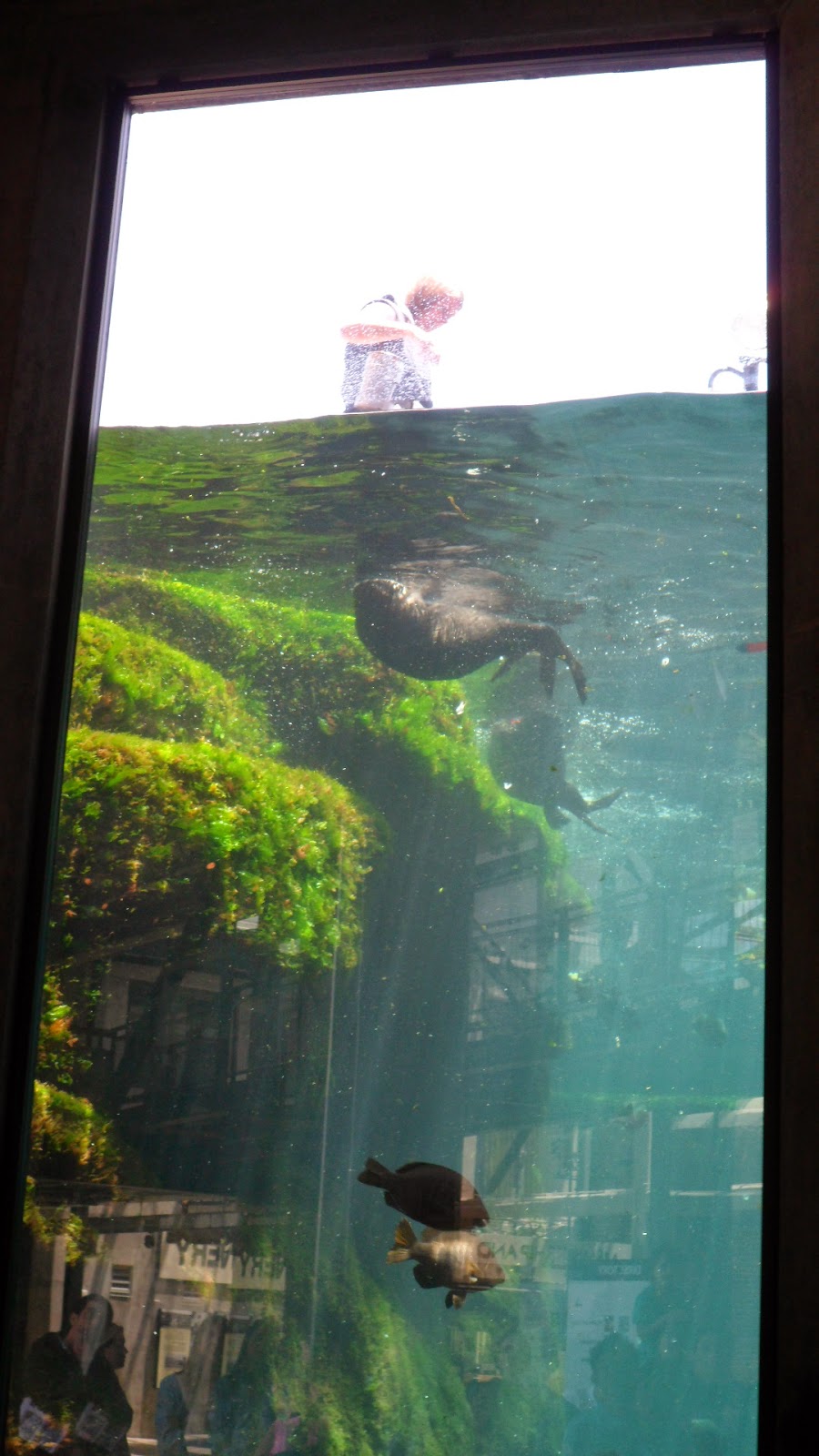 |
| Feeding time |
Directly across from the sea otter exhibit is an auditorium where short programs are given every 30 minutes offering a more in-depth look at some of the featured sea life.
From the auditorium, an escalator and a short bridge lead to "The Open Sea" wing of the complex, which features special (limited time) exhibitions, mesmerizing jellyfish tanks, puffins, and, most stunningly, the largest exhibit in the aquarium (and the namesake of the wing) the Open Sea exhibit.
 |
| An octopus suctioned to the glass at the right of the frame |
 |
| Indonesian Sea Nettle |
 |
| The smallest of the jellies |
 |
| The Open Sea exhibit viewing window is 90 feet long and 15 feet tall (flash photography is discouraged) |
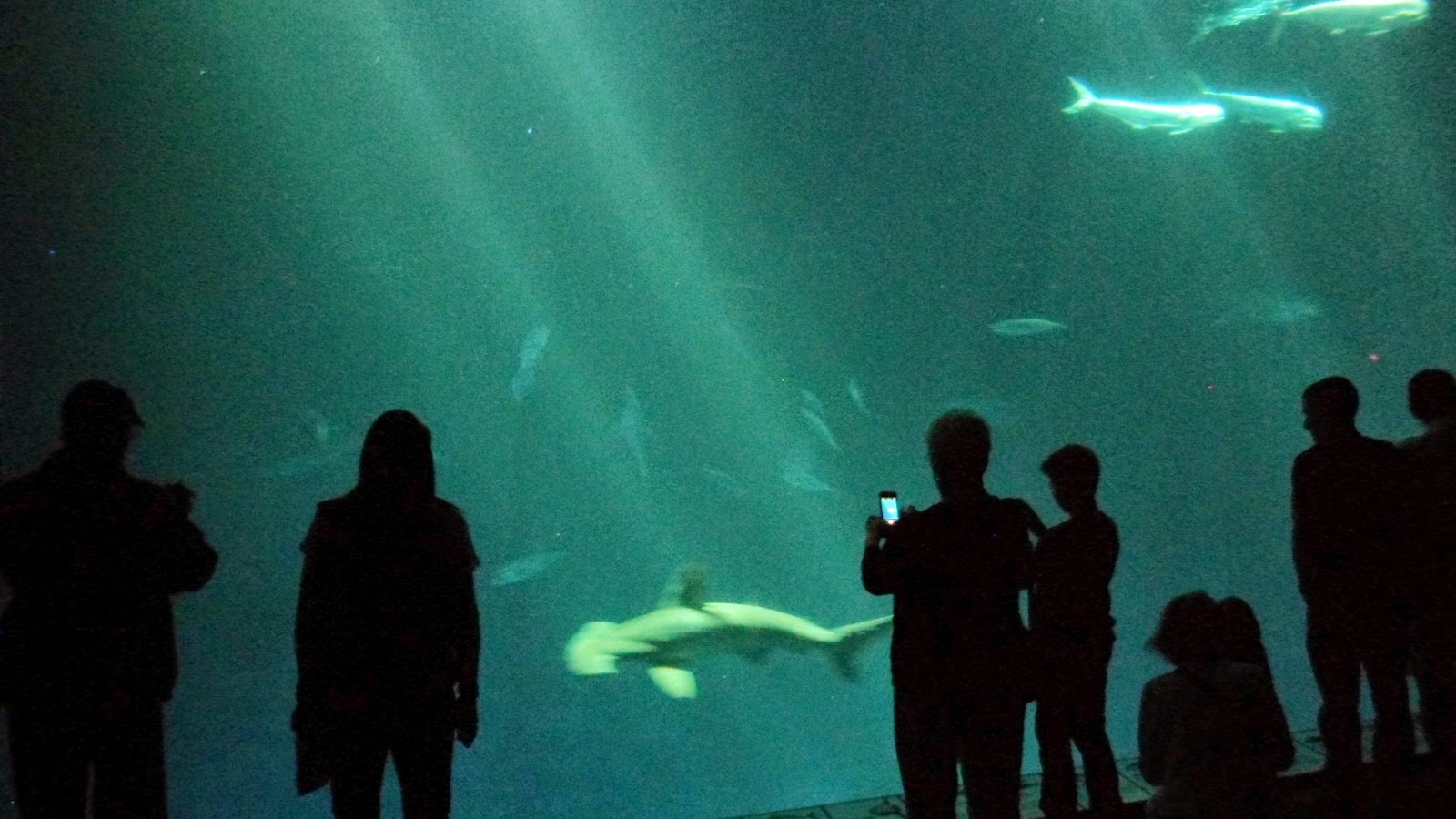 |
| Hammerhead shark |
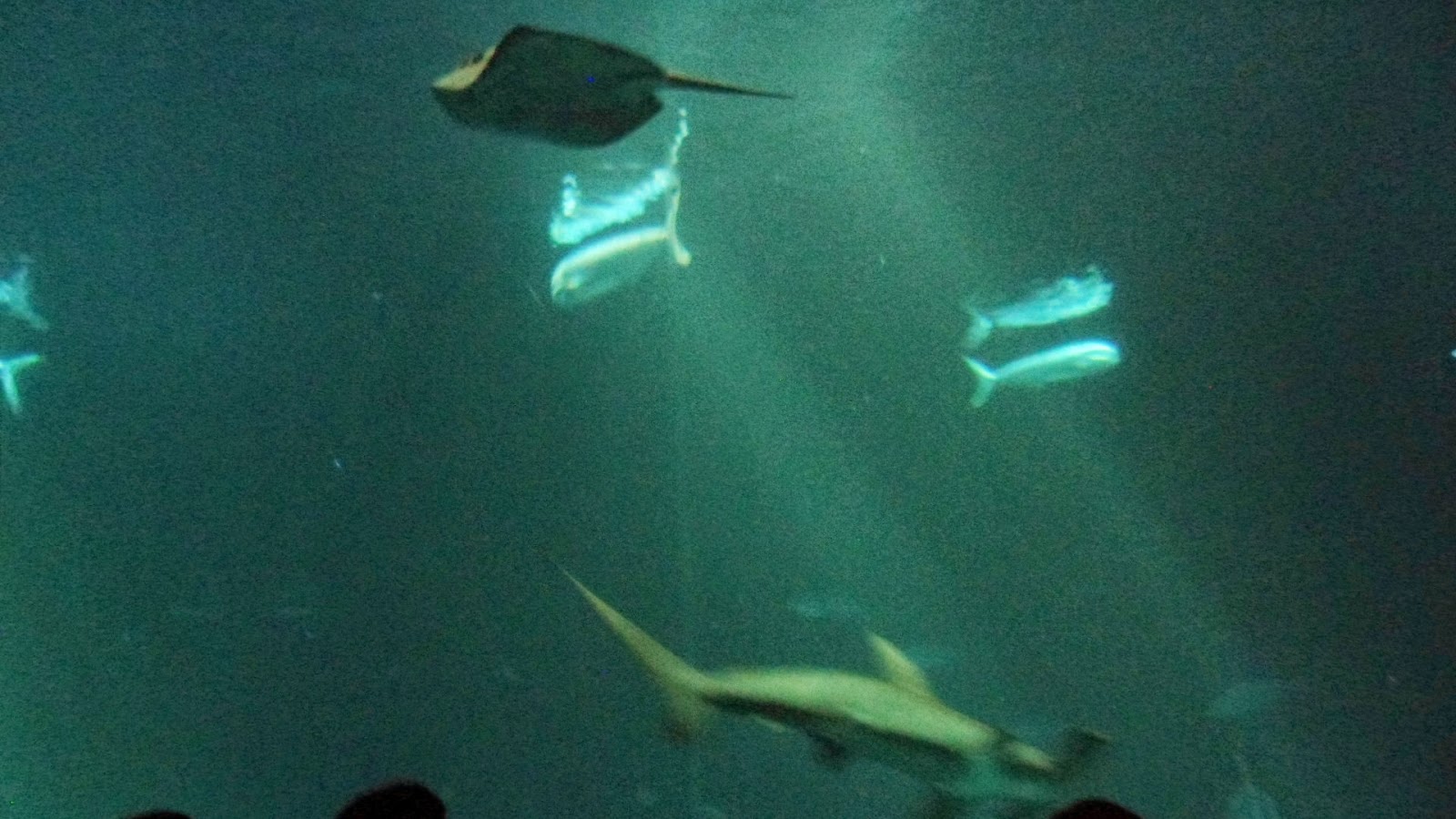 |
| Ray floating above a hammerhead. Dolphinfish in the background. |
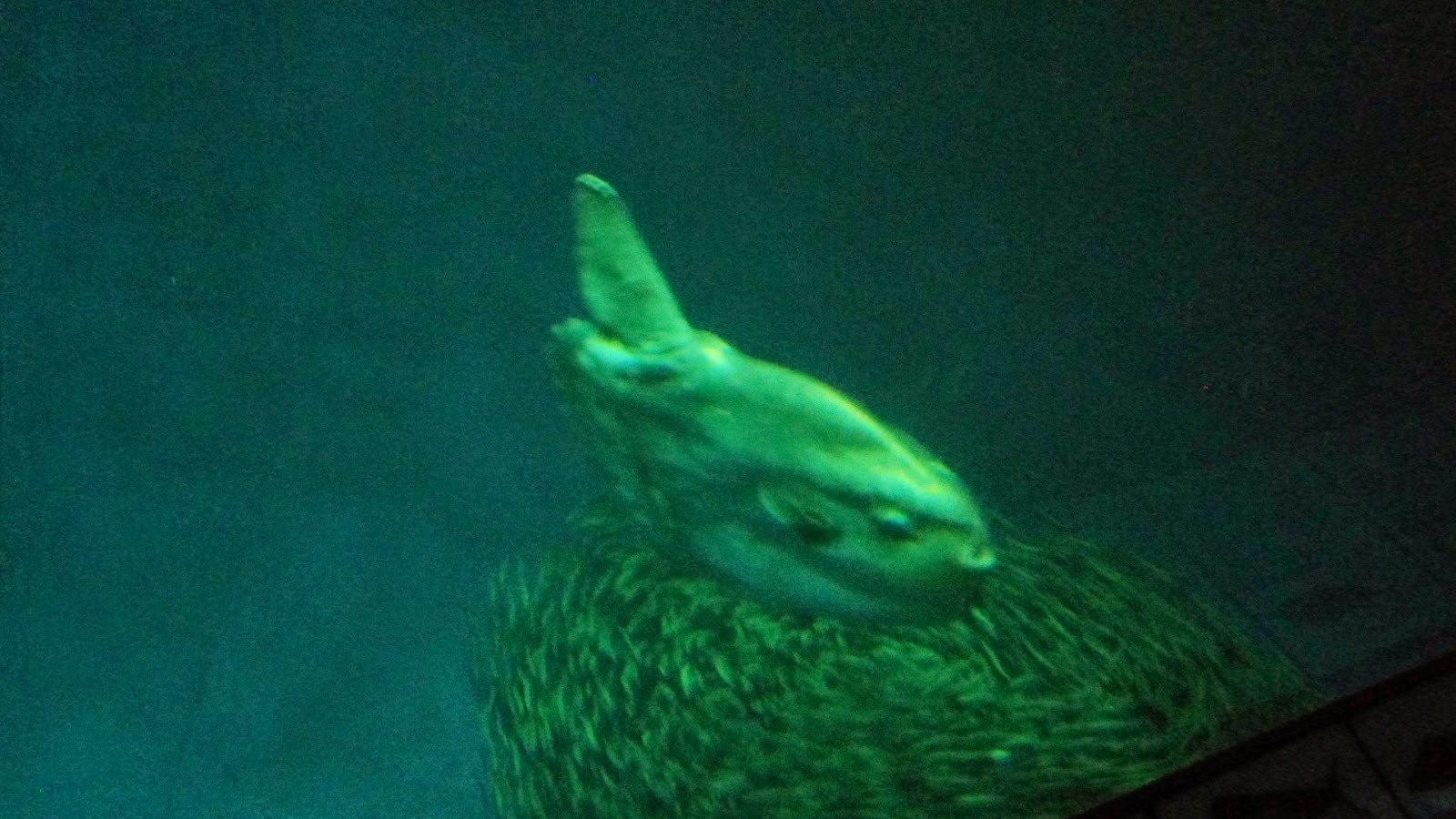 |
| Sunfish with a swarm of sardines underneath |
A bridge on the second floor of the Open Sea Wing connects it to the upper level of the Ocean's Edge Wing. From this level, the kelp forest is once again visible.
African Blackfooted Penguins are the other notable inhabitants of this floor, as well as a "Splash Zone" of exhibits for children.
 |
| Each penguin had an armband with his name on it. This was "Walvis" (on the left) |
 |
| This was "Keyser" |
The Monterey Bay Aquarium is a educational experience that requires at least a few hours to explore in its entirety. Admission includes re-entry, so it's possible to return on the same day to see scheduled feedings or programs that you may have missed while viewing the exhibits. The crowds can be intense, even on a weekday, so it's often necessary to double-back to an area to view all of the tanks and placards.







